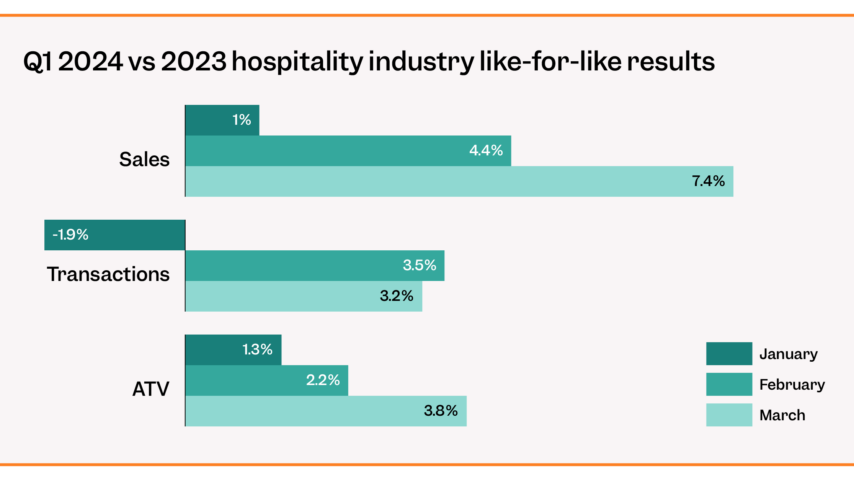In this article
The first few months at any new job can be both extremely exciting as well as extremely challenging. That’s why it’s good to go in with a plan. Originally associated with newly elected American presidents, the 100-day planf has become a mainstay in the world of business regardless of industry.
But what does it look like for hospitality? We’ve put together a bit of a cheat sheet for the first three months in a senior hospitality role to give you some ideas of what to aim for in those first exciting and challenging three months.
Pre-day 1
The truth is the 100-day plan is a bit of a misnomer – it starts far before day 1. Before starting a new role in the hospitality space, it’s important to do your research. Beyond just going to try the restaurant out, it’s important to get familiar with the business from identifying key stakeholders to mapping out who your direct reports will be.
Have a pre-onboarding meeting with the team to understand the onboarding process, what you’ll be expected to drive from your side (like setting up meetings with the rest of the team) and what will be led from their side. Will you even be expected to work a shift as Starbucks famously makes all its head office employees do?
Then start thinking about the main reason you’ve been brought on board. Is it that the business has just fundraised and are looking for someone to take it to the next level? Is it that a strategic overhaul is needed or that the brand is underperforming and they need a bit of a renewal? Thinking about this specific reason will help you map out your next steps in terms of what to prioritise. If you’re taking over from someone else, consider reaching out to see what their experience was like and whether there are any ongoing initiatives that would be helpful to know about from the get go.
Month 1 – Days 1-30
And you’re off! In the first 30 days of a new role, it’s important to really get the lay of the land. You should try to speak to as many people in as many functions as possible. Prepare a list of questions to ask each person specific to their function and role. You should aim to ask them what they think is working well as well as where they see issues. Find out how they would like to see things improved and incorporate their answers into your initial plans. This shows that you are keen on feedback and team engagement from the very beginning.
Start to audit processes across the business. Practices like end-of-day reporting, food safety and compliance should be high on your list. Identify if there are any clear gaps here. If it’s anything to do with safety or hygiene, this should be addressed immediately.
As well as speaking to internal stakeholders, you should also gather as much customer feedback as possible. Are you able to speak to loyal customers? Or can you deep-dive into online feedback? Taking the time to really understand what public opinion (both good and bad) is of the brand will be a great asset.
At this point, you should evaluate how easy or difficult it is to compile this information. Are you pulling information from multiple platforms into spreadsheets? It might be a good idea to look at platforms like Reputation or Yumpingo if getting access to this kind of feedback is difficult and improving guest experience is a high priority.
You should also spend time getting to know the business’s core KPIs (key performance indicators). Ask yourself if they align with the broader vision of the business and if they make sense to track.
Month 2 – Days 31-60
While you may have initially examined the business’s core KPIs in month 1 – it’s now time to go deeper. Start to gather data to audit performance across the board. While doing this, once again ask yourself how easy it is to access the operational data you need. Can you easily compare costs and revenue? If the current reporting structure is clunky or difficult to use, then it might be time to look into implementing a dedicated reporting or business intelligence tool.
Often, this element will be part of the expectations of your new role – to sort out the business’s data strategy. Getting to grips with a data strategy and performance optimisation tools from month 2 will be extremely valuable as they will help you figure out what to do next. You’ll have the information you need to make data-backed plans and decisions.
While on the topic of tools, start to audit what you currently use. You should have a pint of sale, a labour scheduler, and an inventory management system as a starting point. Find out who you are in contract with and whether they are working well for the business and are being used to their full potential. It might be that there are some gaps here – think about whether implementing new tools like kiosks or order and pay would work well for revenue.
Finally, audit your people. Are there any clear gaps that need to be filled? Consider whether you need to do a reshuffle to make things run more efficiently; put skills to use where they’re most needed. This is also a great time to make sure that your HR and scheduling tools are up to scratch and easy to use for all of your team members.
Month 3 – Days 61-100 and beyond
Start to implement any quick wins. If you’ve identified areas that can be improved within process management, now is the time to start. Once you get all your operational teams on the same page and all your processes in good shape then you have a great starting point to examine where the real issues in the business might be.
For example, you may have thought that teams were ordering the right amount of ingredients at each location, but once the stock-taking process is revamped you realise that actually a huge amount of ingredients are thrown away or wasted.
If you need to introduce entirely new processes this is also the time to do it. Although, make sure not to overwhelm the team by giving them too many new processes to learn at the same time. Work slowly and methodically making the most important changes first, waiting for them to be properly adopted, and then introducing the next change.
You can also use this time to start putting together a strategy for bigger initiatives and assembling the people on the team who will help with these. These initiatives will depend from business to business.
If the business is feeling tired and is in need of a refresh, then this might be the time to start looking at branding agencies that can help you with a rebrand. Or perhaps, it’s not the brand that need a refresh, but the food and menu that hasn’t had an update in a while and is feeling stale (no pun intended). At which point you might need to bring on a menu consultant. Whatever the case may be, assembling a wider team and bringing them along shows that you’re team-oriented from the very beginning and goes a long way in creating champions for new ideas.
Conclusion
Enjoy your first three months in this new role! It’s true that it can be stressful, especially with so many moving parts in the hospitality industry, but taking the time to get to know every team and every function will pay off in the long run – you’ll have a much easier time getting everyone on the same page when it does come time to revamping processes and trying new things.
Here’s a handy checklist of everything we’ve covered:
✅ Set up a 1-1 with everyone that reports directly to you
✅ Check hygiene processes are in place
✅ Confirm other important processes (eg opening/end-of-day procedure)
✅ Understand how your daily/weekly/monthly reports are enabled
✅ Define a list of KPIs that need to be looked at
✅ Audit of your operational tools
✅ Audit the team
✅ Implement quick wins
✅ Start building out broader strategy
If you’d like any advice when it comes to all things data and tech, don’t hesitate to get in touch. We’re always happy to chat through plans as experts in the restaurant tech space.





